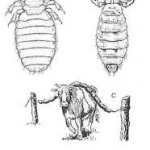Control of Lice in Cattle
go.ncsu.edu/readext?199110
en Español / em Português
El inglés es el idioma de control de esta página. En la medida en que haya algún conflicto entre la traducción al inglés y la traducción, el inglés prevalece.
Al hacer clic en el enlace de traducción se activa un servicio de traducción gratuito para convertir la página al español. Al igual que con cualquier traducción por Internet, la conversión no es sensible al contexto y puede que no traduzca el texto en su significado original. NC State Extension no garantiza la exactitud del texto traducido. Por favor, tenga en cuenta que algunas aplicaciones y/o servicios pueden no funcionar como se espera cuando se traducen.
Português
Inglês é o idioma de controle desta página. Na medida que haja algum conflito entre o texto original em Inglês e a tradução, o Inglês prevalece.
Ao clicar no link de tradução, um serviço gratuito de tradução será ativado para converter a página para o Português. Como em qualquer tradução pela internet, a conversão não é sensivel ao contexto e pode não ocorrer a tradução para o significado orginal. O serviço de Extensão da Carolina do Norte (NC State Extension) não garante a exatidão do texto traduzido. Por favor, observe que algumas funções ou serviços podem não funcionar como esperado após a tradução.
English
English is the controlling language of this page. To the extent there is any conflict between the English text and the translation, English controls.
Clicking on the translation link activates a free translation service to convert the page to Spanish. As with any Internet translation, the conversion is not context-sensitive and may not translate the text to its original meaning. NC State Extension does not guarantee the accuracy of the translated text. Please note that some applications and/or services may not function as expected when translated.
Collapse ▲ When cool weather arrives most of us forget about insects. However, cattle lice are cool weather pests. The lice problem starts in the fall, builds through the cold winter and peaks in the late winter or early spring. Left uncontrolled, a cow can carry tens of thousands of lice by late winter.
When cool weather arrives most of us forget about insects. However, cattle lice are cool weather pests. The lice problem starts in the fall, builds through the cold winter and peaks in the late winter or early spring. Left uncontrolled, a cow can carry tens of thousands of lice by late winter.
Lice are small, flat-bodied insects with legs modified for grasping hairs. They cannot survive off of the animal for more than a few days. Sucking lice, with their narrow, pointed heads, are blood feeders. Biting lice feed by scraping material from the skin and base of the hairs. The eggs, or nits, of both types are glued singly to hairs and hatch in about two weeks. The nymphs, or immature stages, resemble the adults but are smaller. They mature in about three weeks. Adults live two to three weeks and females lay about one egg per day.
Lice are active insects, moving over the body of the cow. Crowding or bunching of the animals at this time of year provides many chances for lice to move from animal to animal. Reduced light intensity appears to play a significant role in louse numbers on animals but nutrition, general health, immune system response, and weather are important factors. The itching caused by lice results in the symptoms we usually notice. Hair can be rubbed off in large patches and large areas may be rubbed until raw and bleeding. Cattle rub against trees, posts, feed-bunks and barns in a response to the itching.
Infestations of biting and sucking lice have been associated with reduced weight gains and general unthriftiness of cattle. The economic impact of these small insects has been very difficult to assess. However, it appears that an average of 10 or more per square inch are necessary to have a significant effect. Lice are most abundant on animals during the period of greatest winter stress. The interaction between low levels of both lice and intestinal nematodes can reduce weight gains by more than 8%. The energy that lice “steal”, coupled with other factors, can have a severe impact on animal health. Manifestations can be anemia, slow recovery from diseases, poor gains, or general unthriftiness.
Lice can be controlled by a thorough treatment program with an appropriate systemic insecticide/parasiticide or non-systemic insecticide. If the louse status of the herd is unknown, it is best to assume that they are present and treat. Many of the new systemic parasiticides, such as doramectin, eprinomectin, ivomectin, or moxidectin, provide long term louse control following a single application. Check the label for lice species that are controlled, some products may not be efficacious against biting lice or tail lice. Do not apply pour-on formulations of these products to lesions or areas covered with mud or manure. Follow any withdrawal times specified on the label.
If lice outbreaks are detected during the winter months in herds not treated for cattle grubs, then non-systemic insecticides with active ingredients such as lambda-cyhalothrin, cyfluthrin, or permethrin must be used. A variety of formulations, pour-ons, spot-ons, dusts or ear tags, can be applied to cattle during cold weather. Dust bags or back rubbers may be used to dispense these products as well. Coverage on the animal may not be thorough with low volume treatments but should be sufficient to knock down heavy infestations and greatly reduce stress on the animals. Residual populations of lice may remain on animals for some time after treatment.
Information obtained from article by Lee Townsend, Extension Entomologist
University of Kentucky College of Agriculture.




